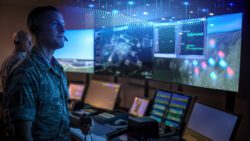Charles River Analytics, a developer of intelligent system solutions, announces a contract awarded by NASA to aid aviation safety analysts in assessing critical flight systems. Charles River, under NASA’s Programming Useful Life Prediction effort (PULP), is developing prediction techniques for estimating remaining useful life (RUL) of a component or device, when it will no longer perform as intended. Accurately predicting RUL can increase safety and reduce financial and operational costs for flight systems, leading to more robust maintenance programs.
“We will be developing a new approach to RUL prediction by using probabilistic programming to combine both expert knowledge and historical data to reasoning about RUL. We’ll apply it to unmanned aircraft, in a way that we expect will be more accurate than using either approach on its own,” explained Dr. Avi Pfeffer, the principal investigator for the PULP effort. “A physics model will be developed by our partner, Unmanned Experts, and will be implemented in our probabilistic program using Figaro, a general probabilistic programming language. We will also apply Figaro’s machine learning techniques to learn RUL predictors from NASA’s data.”
Figaro enables developers to create tools that help people make better decisions in the face of uncertainty. It supports a new kind of model-development process by simplifying the challenging task of creating probabilistic models, which determine a situation’s unknown facts from known facts. One of the most compelling features of Figaro is the ability to integrate different kinds of models, such as physics-based differential equations and statistical models learned from data, inside a probabilistic program. Figaro is released under an open-source license and can be downloaded for free. For more information or to download, visit the Figaro page.




